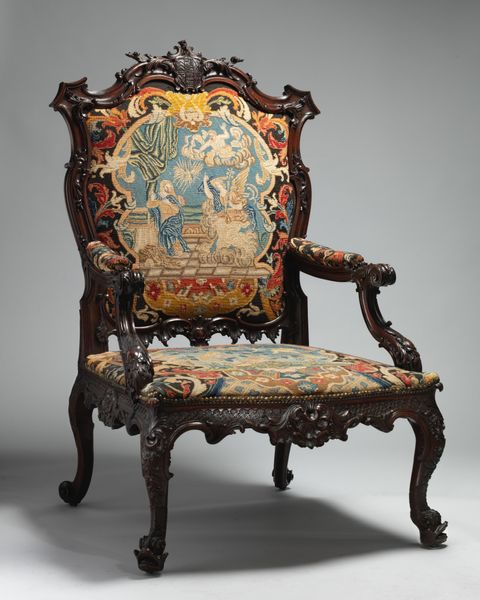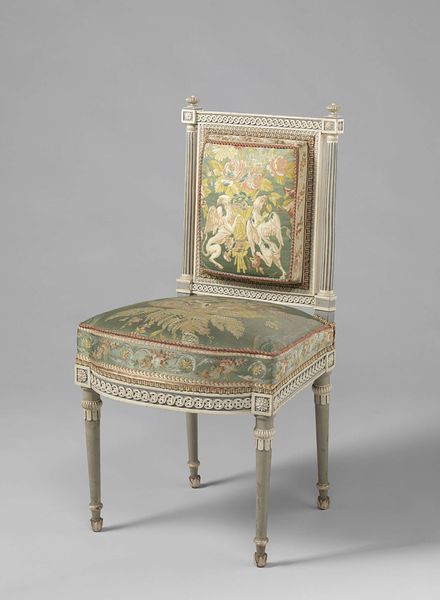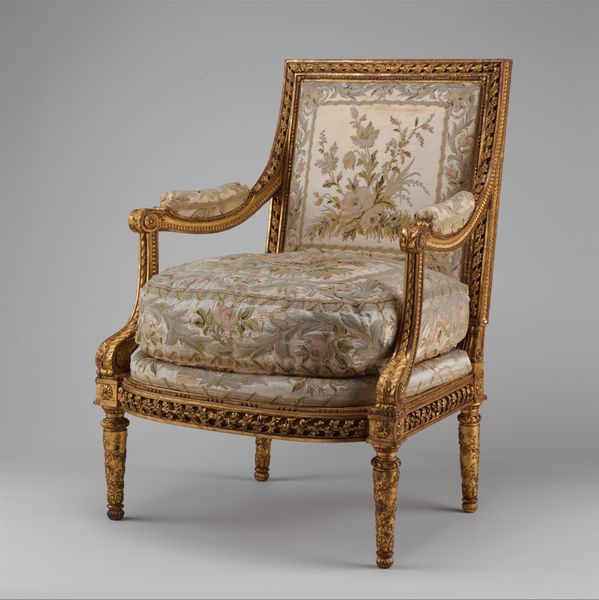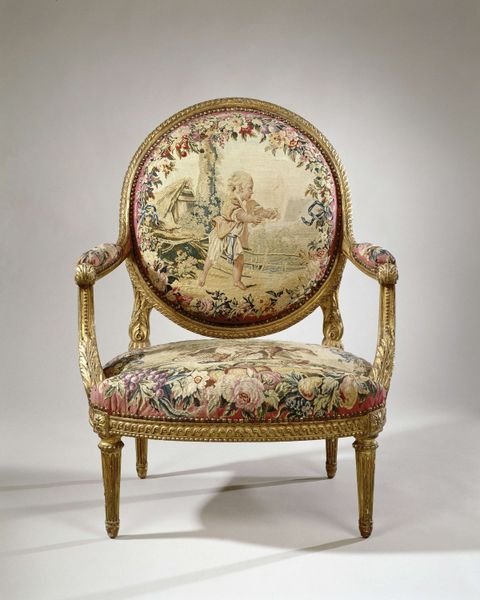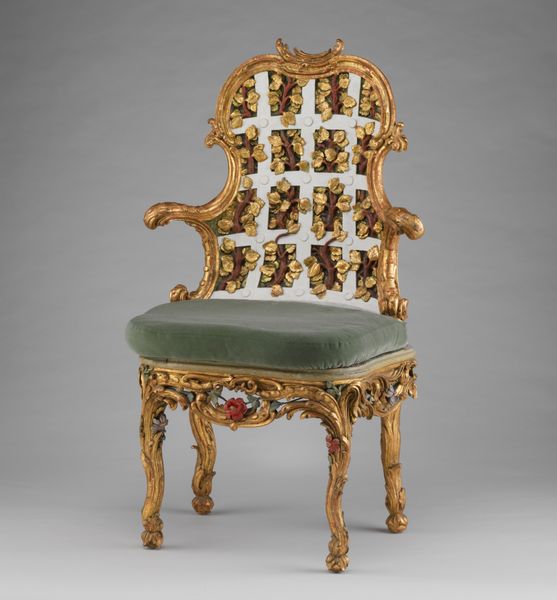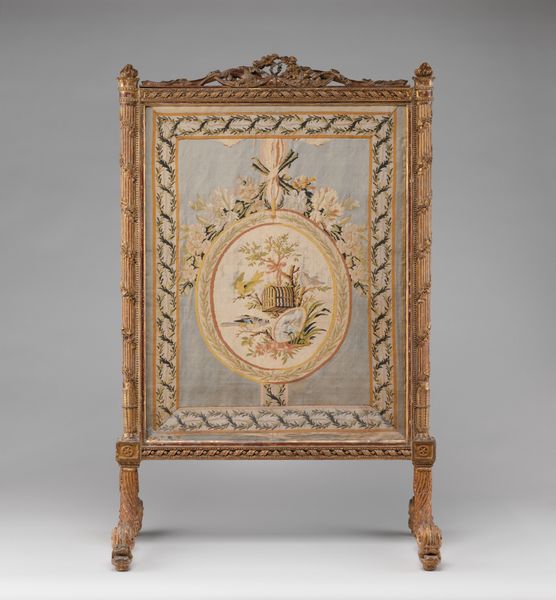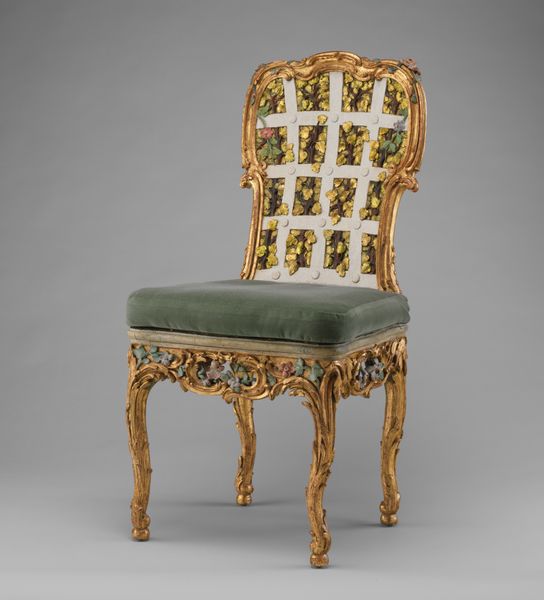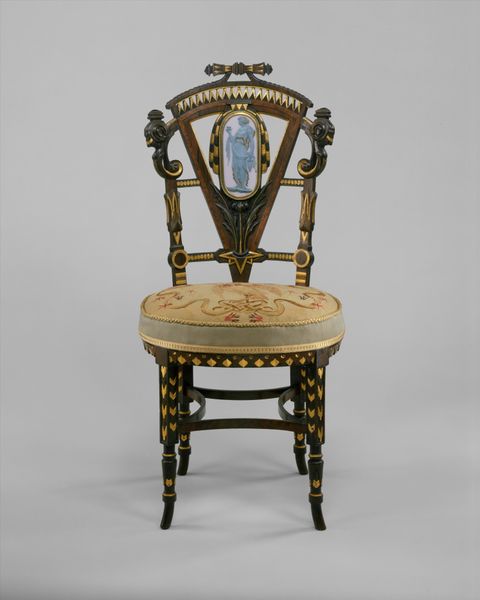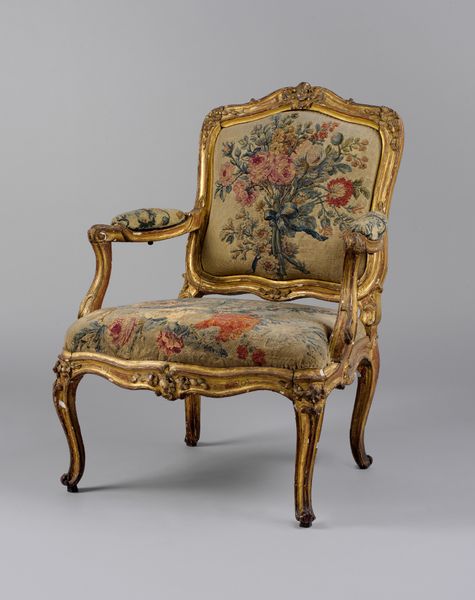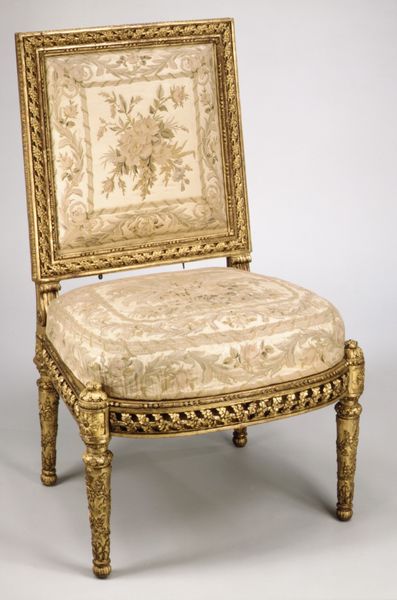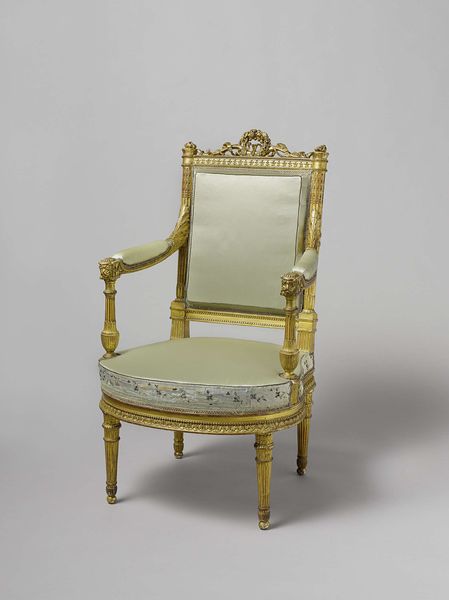
weaving, textile, sculpture, wood
#
weaving
#
furniture
#
textile
#
sculpture
#
wood
Dimensions: height 121.5 cm, width 62 cm, depth 58 cm, width 51 cm, depth 52 cm, weight 17 kg
Copyright: Rijks Museum: Open Domain
Curator: So, here we have "Stoel van palissanderhout", or "Rosewood Chair" created around 1850 by the Horrix Brothers. It incorporates wood, textile, weaving, and sculptural elements. The immediate presence of the tapestry, coupled with the ornately sculpted dark wood makes me think of high society during the 19th century. Editor: Whoa, my first thought is how uncomfortable it looks. I mean, it’s undeniably beautiful, with that tapestry of the woman and the dog, but those straight lines and hard angles? It feels like a throne designed for maximum posture correction rather than relaxing! Curator: Well, discomfort, especially when imposed onto certain bodies, has always been part of how power is visually signaled and maintained. These furnishings would have only been available to certain individuals, who then visually assert dominance with it in a room. But think, too, about the kind of aesthetic statement being made in the wake of industrialization—a declaration that things should be more than functional and machine-made. Editor: True! It's like, "Yes, we *can* make perfectly smooth, standardized chair legs with a machine, but wouldn't it be ever so much nicer to spend weeks hand-carving details?" Talk about a status symbol! That weaving alone, someone *had* to dedicate hours to that. It feels like a giant middle finger to efficiency, which in itself says something about who got to own it. I'm still sticking with it being hard to sit on for very long. Curator: Agreed. I’d also highlight the symbolism present in this work. It uses an idealized rendering of the rural setting which evokes an attitude toward nature typical of the elites. Editor: Oh absolutely! The way that the tapestries depict this "nature" feels so constructed, doesn't it? It's like they’ve designed an entire pastoral fantasy, meticulously woven! It's removed so far from actual farming or peasant life, a stylized idea of simplicity for the few with real luxury. Almost absurd. Curator: Exactly. Its artifice underscores that access to beauty and leisure are tightly bound to systems of power and privilege. Editor: Okay, I see that, yes, every thread—literal and metaphorical—in this chair is tied to ideas about class, taste, and control. A fascinating lens. Thanks for pulling it apart like that. I still feel like sitting in it might be torture, but, intellectually, I'm much more intrigued. Curator: And that’s exactly the power in understanding historical objects!
Comments
No comments
Be the first to comment and join the conversation on the ultimate creative platform.
